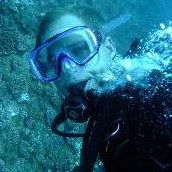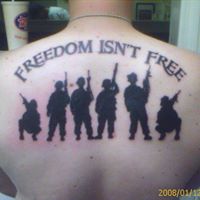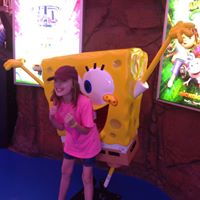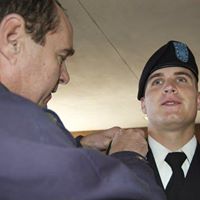Edward V Mayer
age ~84
from Aliso Viejo, CA
- Also known as:
-
- Edward Valentine Mayer
- Valentine V Mayer
- Valentine Cindy Mayer
- Edward Valentine May
- Valentin Mayer
- Edward Mayor
- Phone and address:
-
13 Woodswallow Ln, Laguna Beach, CA 92656
949 597-9778
Edward Mayer Phones & Addresses
- 13 Woodswallow Ln, Aliso Viejo, CA 92656 • 949 597-9778
- Laguna Beach, CA
- San Francisco, CA
- Mission Viejo, CA
Name / Title
Company / Classification
Phones & Addresses
President
Modern Organics Inc.
BioAgronics
Agricultural Services. Land Companies
BioAgronics
Agricultural Services. Land Companies
1150B Harris Road, Headingley, MB R4H 1C4
204 896-7200, 204 896-8240
204 896-7200, 204 896-8240
President
Modern Organics Inc
Agricultural Services · Land Companies
Agricultural Services · Land Companies
204 896-7200, 204 896-8240
Incorporator
K & I DAIRIES INCORPORATED
President
Umiat Units
200 Oceangate, Long Beach, CA 90802
10 Chandler Pl, Pasadena, CA 91108
16385 Ardsley Cir, Huntington Beach, CA 92649
805 A St, Taft, CA 93268
10 Chandler Pl, Pasadena, CA 91108
16385 Ardsley Cir, Huntington Beach, CA 92649
805 A St, Taft, CA 93268
President
DESIGN'S ALIVE, INC
Business Services
Business Services
845 N Elm St, Orange, CA 92867
President
S.T.G. SCREEN PRINTING, INC
845 N Elm St, Orange, CA 92667
President
Z SCREENPRINTS, INC
845 N Elm St STE A, Orange, CA 92867
Us Patents
-
Copying Apparatus With Automatic Bottom Feeder
view source -
US Patent:46194509, Oct 28, 1986
-
Filed:May 10, 1985
-
Appl. No.:6/732608
-
Inventors:Carl P. Anderson - Menlo Park CA
Edward F. Mayer - San Jose CA -
Assignee:Ricoh Systems, Inc. - San Jose CA
Ricoh Company, Ltd. - Tokyo -
International Classification:B65H 304
-
US Classification:271 35
-
Abstract:A bottom feeder for copy paper feeding has means for imparting a curvature to the sheets, the curvature being in the direction the sheets will be withdrawn. The curvature provides transverse rigidity to permit lifting weight of stack off the bottom sheet. This facilitates withdrawing the sheets one at a time from the bottom of the stack. A curved paper tray imparts a curvature to the paper. A pair of holding clamps are provided, one on either side of the stack of paper, which are partially withdrawn from the sides of the paper stack so that paper may be added to the stack. When sheets are to be fed, the clamps which comprise a pair of plates having a friction material on the paper facing side thereof are moved in to engage the sides of the stack of paper. An arrangement is provided to thereafter lower the paper tray slightly from the bottom of the stack, or lift the clamps and the curved paper stack. In either event, the pressure of the stack weight is now removed from the bottom sheet.
-
Electrophotographic Copying Apparatus And Method Of Use Including Electrostatic Toner Recycling Procedure
view source -
US Patent:45726558, Feb 25, 1986
-
Filed:Jul 25, 1983
-
Appl. No.:6/516954
-
Inventors:Elden R. Morrison - Palo Alto CA
Edward F. Mayer - San Jose CA
Donald F. Pfeuffer - San Jose CA
Victor B. van Blerk - San Jose CA -
Assignee:Ricoh Systems, Inc. - Tokyo
-
International Classification:G03G 2100
-
US Classification:355 15
-
Abstract:An electrophotographic copying apparatus utilizing a rotatable drum having a photosensitive outer circumferential surface is disclosed herein along with its method of operation. In making copies of a given sheet of information, an electrostatic latent image corresponding to the information to be copied is formed on a circumferential segment of the drum surface and the image is developed by applying toner onto the image bearing segment of the drum surface. Thereafter, the applied toner is transferred to a blank sheet thereby forming the copy. Once one or more copies are made from a given electrostatic image, any applied but untransferred toner on the drum surface is moved onto a second circumferential segment, preferably by means of a pliant roller segment and preferably with the aid of electrostatic attraction. The toner accumulated on the second segment of the drum surface is then moved by the latter to a specific point and removed from the second surface segment. During this latter movement, the toner is electrostatically held in place on the second drum surface segment.
Isbn (Books And Publications)
-
Winning At Rubber Bridge
view source -
Author:Edward Mayer
-
ISBN #:0713430672
-
The Curriers And The City Of London: A History Of The Worshipful Company Of Curriers
view source -
Author:Edward Mayer
-
ISBN #:0950033804
Medicine Doctors
Resumes

Edward Mayer
view source
Edward Mayer
view sourceLawyers & Attorneys

Edward Mayer - Lawyer
view sourceISLN:
916983756

Edward Mayer - Lawyer
view sourceOffice:
DanaherLagnese, PC
Specialties:
Medical Malpractice
Medical Malpractice Defense
Litigation
Personal Injury
Employment & Labor
Defective and Dangerous Products
Medical Malpractice Defense
Litigation
Personal Injury
Employment & Labor
Defective and Dangerous Products
ISLN:
905074076
Admitted:
1989
University:
Northern Illinois University, B.S., 1986
Law School:
University of Bridgeport, J.D., 1989
Youtube

Edward Mayer
view source
Edward Mayer
view source
Edward Mayer
view source
Edward Mayer
view source
Edward Mayer
view source
Edward Mayer
view source
Edward Mayer
view source
Ed Mayer
view sourceClassmates

Edward Mayer
view sourceSchools:
Staunton Military Academy Staunton VA 1963-1967
Community:
Chris Morgan, Blair Schwanewede, Dave Embody, Scott Mcknight, Peter Ramsey

Edward Mayer
view sourceSchools:
Archbishop Carroll High School Radnor PA 1977-1979
Community:
Doris Edmonds, Richard Crockett, George Ralston

Edward Mayer
view sourceSchools:
Greenwich Country Day School Greenwich CT 1970-1972
Community:
David Frasier, James Brewer, Carole Wilson, Ann Goar, John French

Edward Prentiss (Mayer)
view sourceSchools:
Crystal Lake Elementary School Ellington CT 1970-1977
Community:
Sally Modzinski

Greenwich Country Day Sch...
view sourceGraduates:
Brooke Boardman (1968-1979),
Edward Mayer (1970-1972),
Brendan Garnett (1987-1997),
Cindy Leigh (1952-1960),
Wendy Ahrensdorf (1961-1964)
Edward Mayer (1970-1972),
Brendan Garnett (1987-1997),
Cindy Leigh (1952-1960),
Wendy Ahrensdorf (1961-1964)

Staunton Military Academy...
view sourceGraduates:
Edward Mayer (1963-1967),
Charles McConnell (1967-1971),
Daniel Hunt (1955-1962),
John Tewksbury (1948-1952)
Charles McConnell (1967-1971),
Daniel Hunt (1955-1962),
John Tewksbury (1948-1952)

Holcomb High School, Holc...
view sourceGraduates:
Elizabeth Trevino (2003-2007),
Ed Mayer (1973-1977),
Paul Scheumack (1962-1966),
Natalia Carrillo (1996-2000)
Ed Mayer (1973-1977),
Paul Scheumack (1962-1966),
Natalia Carrillo (1996-2000)
Myspace
Flickr
Plaxo

Edward M. Mayer, Esq.
view sourceMayer & AssociatesManagement Consultant at Mayer & Associates Past: VP, Director of Program Management & OCIO at Radian Group, Director, Program Management at...

Edward Mayer
view sourcePresident at Barclays International Realty President
Barclays International Realty
249 Peruvian Ave.
Palm Baech, Florida 33480

Edward Mayer
view sourcePalm BeachPresident at Barclays International Realty Palm Be...
Googleplus

Edward Mayer
Work:
Empower Network - Owner (2012)
Hotel Hershey - Valet (1992-2009)
Hotel Hershey - Valet (1992-2009)
Tagline:
Professional Network Marketer - Helping Others Achieve Their Dreams

Edward Mayer
Tagline:
Family man and Full Time Network Marketer

Edward Mayer

Edward Mayer

Edward Mayer
Work:
PT. Sarana Medika

Edward Mayer

Edward Mayer

Edward Mayer
Get Report for Edward V Mayer from Aliso Viejo, CA, age ~84
















